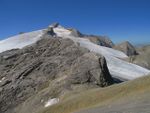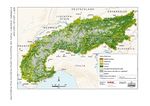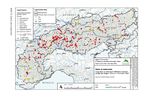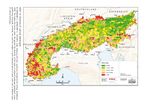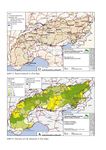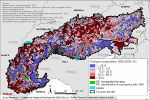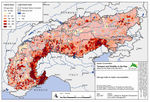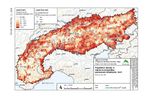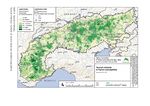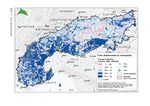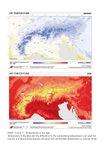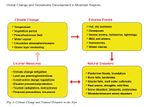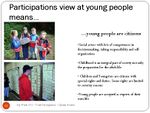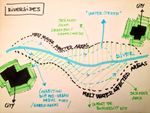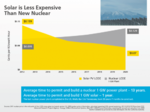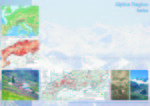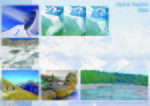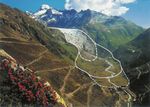Group G - Collaborative Climate Adaption Project: Difference between revisions
No edit summary |
|||
| (18 intermediate revisions by the same user not shown) | |||
| Line 75: | Line 75: | ||
Image:01map_landuse.jpg|Landuse of the Alps | Image:01map_landuse.jpg|Landuse of the Alps | ||
Image:02map_dams_reservoirs.jpg|Dams and Reservoirs | Image:02map_dams_reservoirs.jpg|Dams and Reservoirs | ||
Image:| | Image:11map_cultural-landscapes.jpg|Diversity of cultural landscape | ||
Image:| | Image:13map_traffic.jpg|Traffic | ||
Image:| | Image:| | ||
</gallery> | </gallery> | ||
=== Cultural/social/political context=== | === Cultural/social/political context=== | ||
| Line 95: | Line 94: | ||
Image:Mapchangeinpopulation.jpg|population | Image:Mapchangeinpopulation.jpg|population | ||
Image:Oldageindex.jpg|Old Age Index in Alpine communities | Image:Oldageindex.jpg|Old Age Index in Alpine communities | ||
Image:06map_population.jpg|Population density | |||
Image:04map_tourism.jpg|Tourism intensity | |||
Image:08map_farm-abondanment.jpg|Farm abondament | |||
</gallery> | </gallery> | ||
| Line 192: | Line 194: | ||
<gallery caption=" " widths="150px" heights="150px" perrow="5"> | <gallery caption=" " widths="150px" heights="150px" perrow="5"> | ||
Image:Alpweek.JPG|Alpweek | |||
Image:Young_people_alpweek_ppt.JPG| Alp week - Youth participation presentation | Image:Young_people_alpweek_ppt.JPG| Alp week - Youth participation presentation | ||
</gallery> | </gallery> | ||
| Line 212: | Line 215: | ||
Landscaping challenge: ''how we can react for the flooding?!'' As an example of some options we can suggest: | Landscaping challenge: ''how we can react for the flooding?!'' As an example of some options we can suggest: | ||
Colleting the water in channels, beds and use as a landscape element; design with it for creating besides ''green corridors'', ''greenbelt'' among the river. We can design ‘water-streets’ in this areas in order to use more channels for the extra-water, and with this possibilities it take more time the water flowing further. (More water in more places, and not only in the river, so it could not flood) In this areas which needs these ‘water-streets’ we can support the '''biodiversity''' with planning new green areas as landscape architects. | Colleting the water in channels, beds and use as a landscape element; design with it for creating besides ''green corridors'', ''greenbelt'' among the river. We can design ‘water-streets’ in this areas in order to use more channels for the extra-water, and with this possibilities it take more time the water flowing further. (More water in more places, and not only in the river, so it could not flood) In this areas which needs these ‘water-streets’ we can support the '''biodiversity''' with planning new green areas as landscape architects. | ||
<gallery caption=" " widths="150px" heights="150px" perrow="5"> | |||
Image:Machbarkeitsstudie_auenkarte_uebersicht.gif|Donau Riverside | |||
Image:Riversides.JPG|Melt water affected areas, Sketch by Vivien Harmati | |||
</gallery> | |||
=== Proposals for Climate Change Mitigation === | === Proposals for Climate Change Mitigation === | ||
| Line 248: | Line 256: | ||
*How will this area look like in 2060? | *How will this area look like in 2060? | ||
*Please forecast one potential future development taking climate change into account | *Please forecast one potential future development taking climate change into account | ||
2060: | |||
the global warming is getting on further(but not faster as before, hopefully :-)). The temperature in the Alpine Region incereased still more than in the valley, the perma-frost soil is melting everyday and releases greenhouse-gas. | |||
Because of the warming a higher perticipation, the bordering regions have to deal with flood water occurrences and changed their strategy with renaturation. This caused an other landscape. Step by step the riversides got a bit more natural and developed back to a manifold habitat for flora and fauna. | |||
The glaciers have been melted so the greenland became much more. skiing-tourism reduced, but the new possibilities are attractive for hikers, which is now the target group for tourism-management. | |||
But the melting set free some interesting geographic sites the scientists are interested in to do some research on the earth development. | |||
Illustration: Map/diagram/sketches photos and background notes | Illustration: Map/diagram/sketches photos and background notes | ||
=== What can be generalized from this case study? === | === What can be generalized from this case study? === | ||
| Line 257: | Line 272: | ||
*Short statement plus background notes | *Short statement plus background notes | ||
The Problem of climate change and global warming calls for fast developing technology in | |||
renewable energy and construcktion material. | |||
There is a need to find agreements and common (more as they have now), border crossing concepts to content aigainst | |||
climate change and it is outcome. | |||
We need to boost existing grass- and woodland areas to keep or rather upgrading habitats and | |||
biodiversity, we need to force site preservation to balance pollution caused at another place. | |||
Some guestions and essential, and base points we deal with in our case study which important to deal with and work on. | |||
Questions such as are how to reduce traffic, landuse and emissions and keep our needs | |||
covered? How to slow climate change and its effects to make/keep our lives (more) | |||
comfortable? How we can show/teach the people about the climate change and the consequences if it? How we can make them more self-conscious about their environment, about the Alps. What we can do as landscape architects, architects, and urban planners? How we can collaborate with the neighbour-areas (for example in the case of renewable energy)? How we can persuade the political life that the fact of climate change is/should be priority now? | |||
=== Presentation Slides === | === Presentation Slides === | ||
<gallery caption=" " widths="150px" heights="150px" perrow="3"> | <gallery caption=" " widths="150px" heights="150px" perrow="3"> | ||
Image: | Image:Slides_fin_Page_1.jpg|Slide One | ||
Image: | Image:Slides_fin_Page_2.jpg|Slide Two | ||
Image: | Image:Slides_fin_Page_3.jpg|Slide Three | ||
</gallery> | </gallery> | ||
| Line 269: | Line 295: | ||
<gallery caption=" " widths="150px" heights="150px" perrow="5"> | <gallery caption=" " widths="150px" heights="150px" perrow="5"> | ||
Image: | Image:Rhone-glacier-postcd1orig-w.jpg|rhone glacier | ||
Image: | Image:24swiss.xlarge1.jpg|postcard | ||
Image:yourimage.jpg|your image text | Image:yourimage.jpg|your image text | ||
Image:yourimage.jpg|your image text | Image:yourimage.jpg|your image text | ||
| Line 281: | Line 307: | ||
=== References === | === References === | ||
Please add literature, documentations and weblinks | Please add literature, documentations and weblinks | ||
'''WEBLINKS:''' | |||
'''''ALPARC''''', the Alpine Network of Protected Areas [http://www.alparc.org/] | |||
'''''CIPRA''''' - Living in the Alps [http://www.cipra.org/de] | |||
'''''CIPRA''''' - ''Alps know how'' [http://alpsknowhow.cipra.org/start.html] | |||
'''''Alpine Convention''''' [http://www.alpconv.org/en/convention/default.aspx] | |||
'''''Alpweek''''' - The renewable Alps [http://www.alpweek.org/2012/index.php] | |||
'''''EEA - European Environment Agency''''' [http://www.eea.europa.eu/] | |||
'''''The Revue de Géographie Alpine''''' / Journal of Alpine Research is an international, multidisciplinary journal [http://rga.revues.org/index.html] | |||
'''''UNEP''''' - ''United Nations Environment Programme'' DEWA/GRID-Geneva /environment for development/ Global Glacier Changes - facts and figures [http://www.grid.unep.ch/glaciers/] | |||
'''''MAP''''' - ''The Mesoscale Alpine Programme'' - Alpine Precipitation Analyses from High-Resolution Rain-Gauge Observations [http://www.map.meteoswiss.ch/map-doc/rr_clim.htm] | |||
'''''Climate Alliance''''' [http://www.klimabuendnis.org/home.html] | |||
'''ARTICLES:''' | |||
Cleantechnica: Solar Power [http://cleantechnica.com/solar-power/] | |||
Cleantechnica: Germany to Store Wind Power in Mountains [http://cleantechnica.com/2011/06/20/germany-to-store-wind-power-in-mountains/] | |||
Ágnes Zólyomi: The effect of the climate change on the alpine vegetation (in Hungarian)Zólyomi Ágnes: A klímaváltozás hatása az alpesi növényekre [http://klimabarat.hu/node/225] | |||
Climate Change in the European Alps: Adapting Winter Tourism and Natural Hazards Management [http://www.oecd.org/env/climatechange/climatechangeintheeuropeanalpsadaptingwintertourismandnaturalhazardsmanagement.htm] | |||
The New York Times - Frozen in Memories, but Melting Before Their Eyes [http://www.nytimes.com/2006/10/24/world/europe/24swiss.html] | |||
In the Alps is defrosting the Neolithic daily life... (in Hungarian) Múlt-kor történelmi portál - Kiolvadnak a neolitikus mindennapok az Alpokban [http://www.mult-kor.hu/20080916_kiolvadnak_a_neolitikus_mindennapok_az_alpokban] | |||
'''DOCUMENTATIONS:''' | |||
'''''University of Innsbruck - Alpine Space - Man and Environment''''' | |||
Natural Disasters and Climate Change in the Alps [http://www.uibk.ac.at/alpinerraum/publications/vol7/berz.pdf] | |||
([http://www.uibk.ac.at/alpinerraum/index.html.en] Univesrity of Innsbruck) | |||
'''''EEA - European Environment Agency''''' - Publications [http://www.eea.europa.eu/publications#c14=&c12=&c7=en&c9=all&c11=5&b_start=0&c13=alps] materials | |||
'''''EEA - European Environment Agency''''' - EEA Report No 8/2009 [http://www.eea.europa.eu/publications/alps-climate-change-and-adaptation-2009] eea report | |||
'''''Alpweek''''' - The renewable Alps - materials [http://www.alpweek.org/2012/e/materials.php] | |||
'''''MAP''''' - The Mesoscale Alpine Programme - documents [http://www.map.meteoswiss.ch/] | |||
'''''The Alps: People and pressures in the mountains, the facts at a glance'''''[https://docs.google.com/viewer?a=v&q=cache:4ZN1c5_8DnIJ:www.alpconv.org/en/publications/alpine/Documents/Vademecum_web.pdf+alps+maps+protected+areas&hl=hu&gl=hu&pid=bl&srcid=ADGEESieSNQFvU-LF9SH0sZLerPqT6qPOU9cOUPWlb26xuvR6ZyU1BdQnIQwKlOSjgFrx_GkXEEZX2UEF95c3t3-9yq1RARFZv5eIoN1WPK4ubwktpbZn1S-brtckyj36EKmrbrSlya4&sig=AHIEtbRcxffoVxNq-ED3taEQPjFnMpaY4g] | |||
'''''A Precipitation Climatology of the Alps From High-Resolution Rain-Gauge Observations''''' [https://docs.google.com/viewer?a=v&q=cache:8WOF42w00D4J:www.map.meteoswiss.ch/sop-doc/rr_sop/FreiSchaer1998.pdf+&hl=hu&gl=de&pid=bl&srcid=ADGEEShT4D_b6DgPPsLOD5HGtQhH3vbR-ChHbIInzlRzgPh43uyg8m47N6D75LDsSKTK0x_TstKp4AK5LSywQlp6J7vGFi4Ap2jB7zmU7ckeeqXDQSnPTF1GoSZ2CszAVfUP8pHjWw1Y&sig=AHIEtbRZDj-s20og_4HLAE0D1777DDhdAg] | |||
'''''VIDEOS:''''' | |||
YouTube - CIPRAinternational [http://www.youtube.com/user/CIPRAInternational?feature=watch] | |||
- annual conference 2011 [http://www.youtube.com/watch?v=MfCpR_M4MSk&list=PL70B6303D0BE2E99F] | |||
'''young@lpweek videos:''' | |||
Public transport [http://www.youtube.com/watch?v=re3SHGfjt8c] | |||
Rifiuti [http://www.youtube.com/watch?v=HQxbSzME1s4&list=PL7fclzYsEAtJoWguhx0hJjECFlcJ7jCfT] | |||
Fish [http://www.youtube.com/watch?v=swEti0pCbS4&list=PL7fclzYsEAtJoWguhx0hJjECFlcJ7jCfT] | |||
Reduce Pollution [http://www.youtube.com/watch?v=Y5W7Yn0YJ5E] | |||
Save the Alps [http://www.youtube.com/watch?v=Y5W7Yn0YJ5E] | |||
Ther are two ways [http://www.youtube.com/watch?v=xJPtf6HxcL8] | |||
Save Energy [http://www.youtube.com/watch?v=e992TUeN-z4&list=PL7fclzYsEAtJoWguhx0hJjECFlcJ7jCfT] | |||
---- | ---- | ||
Latest revision as of 19:56, 21 January 2013
Rationale: Why have you selected this case study area?
- Please summarise:- e.g. previous experience, is it your everyday environment?, specific vulnerability, previous research being done etc.
We selected The Alps because we believe that it is an emblem for the whole world. Europe has always been a step before the rest of the world, and somehow is an example in many of the paths that the rest of the world follows. The fact that the Alps are being affected so badly by the climate change is a wakeup call for everybody who has heard about climate change but does nothing to make things different.
During the semester the lecture of Carole Piton (Climate Change in the Alps – Thinking one step further!) also gave us encouragement to work with this area in this assignment. Besides the outlook in the Alp’s theme that we made for ourselves, was interesting for the three of us, and finally also by this reason we select this area.
Authors' perspectives
- What theoretical or professional perspective do you bring to the case study?
In the past years everyone can hear about the climate change and the terrible consequences which caused by it in our world. Mostly we are informed (when I write we, now I mean not professional experts) about this theme and its relevance incomplete by the press - as I experience it. When people hear this word “CLIMATE CHANGE” – came to their mind these kinds of expressions, such as: global warming, sea level rising, greenhouse gases, or the Netherlands. Of course it is good, but not enough in our century. In general how many people hear about the problems in Thailand, Alaska, Kenya or Saudi-Arabia and so on many places in the world which are touched by this global problem?! These previously mentioned places do not became known, or not enough; at least that way as we know about the problems in the Netherlands.
As young landscape architects/urban planners/architects we have also big responsibility to care about our environment surrounding by us, and using our knowledge in order to do something against climate change worldwide. We need to shape our world in the future by keeping in our mind the consequences of climate change, and see the exactly challenges which are going to wait for us to resolve them. We must work on this problem (more) deliberately.
One of the articles that I read about before we started to work with the area, and made me very motivated and interested, since this article from 2008 tells me in easy way that is actually happening right now in the Alps. As I am not expert of the theme, it was important to me understand easily, so as would be for many people who are not scientists. This article was about a discovery by a Swiss married couple in the Schnidejoch glacier, in Switzerland. They found ~4500 years old troves in this region; this fact scientific area, for the research worker was amazing finding since this was older as ‘Ötzi’, the ~3000 years old ice-frozen man.
Climatologist, Martin Grosjean from the University of Bern explains us what this fact means related to the climate change. (Need to be noticed that the Schnidejoch glacier is one of the most sensitive place in the Alps regarding the the temperature fluctuation, and climate change.) For him the finding at the Schnidejoch glacier is the evidence of the global warming. He says: “The skin is the most valuable trove. If the skin is exposed to weather, sunlight, wind, rain effects, almost immediately disintegrates. The fact of this leather is so undamaged, and well-conditioned, means up to the present time it was covered with ice, so the past 5000 years the glacier has never been lower, thinner than in 2003 and the following years.”[1][2][3]
Landscape and/or urban context
- Biogeography, land use patterns, cultural features, overall character, history and dynamics
The Alps were inhabited about 5000 years ago, when the first glaciers withdraw, and it became inhabitable. Nowadays they are one of the world most famous placer for tourism. They are the second favorite holyday place of Europe after the Mediterranean coast, and tourism represents 10 - 12% of the jobs there. The Alp area is also an important source of water for Europe. It provides safe drinking water as well as water to produce energy by hydropower, thermal power and biomass. It is also an important area of wood production. Forests cover 43% of the surface, and are used for construction and fuel. One quarter of the Alps surface is also potential agricultural land. Most of it is grassland and 12.6 %is arable land.
- ratio of green/blue and sealed/built-up areas
The sealed areas are not too high but have had an important growth. In Austria, for example, 5 % of the surface is used for roads or construction, 40% of this surface is sealed. About half of new residences in this country are for single-family. The built up areas in European countries have grown 20% in the last 20 years, while the population has grown only 6 % in this time. Construction is being limited already I some places like Switzerland.
Illustration: Map; sketches; short descriptive analyses
Cultural/social/political context
- Brief explanation of culture, political economy, legal framework
The Alps, heart of the European continent, is the home to diverse cultures. Nowadays eight states, France, Monaco, Italy, Switzerland, Liechtenstein, Austria, Germany and Slovenia inhabit this mountainous region. Many languages, a few Slav languages, German languages and Romance languages (French and Italian) and it´s dialects are being spoken around these lands. Some have been lost.
Most of the countries are wealthy ones, like Switzerland, and can afford to invest in ecological matters. Unlike poor countries, ecology should be a priority for them. It is an economic matter as well, and some things are already being done.
Some of these countries are members of the European community and have experience working together. Isolated measures for sustainable development are not an option. In spite of the cultural differences environmental problems are cross-borders. In this case, however, there is a growing desire for preservation within the society that is above the frontiers and makes the Alps a region with common issues and goals, which must act as one to face the climate problems. Like most of the world, population distribution in the Alpine region is changing. Urban population is growing while there is a rural exodus. Small communities in the mountains are reducing, except for the touristic ones, and people are moving to low-altitude locations and main urban centers. And when analyzing the Alpine region as a whole, there is also a change in the population distribution. The Central Alps are growing in population while Southwest Alps are being depopulated. This variation, in the population distribution, as well as the differences you can find in flora, fauna, climate, geology and culture along the Alps, makes it necessary to find special criteria for sustainable development to each individual case.
Illustration:
Bullet points, image, background notes
Local Climate
- What are the climatic conditions at present? Have there been extreme weather events in the near past?
- Which changes are expected? Is there any evidence?
The Alps is one of the biggest mountain range in Europe, and stretches at east from Slovenia, Austria through Italy, and Switzerland Liechtenstein westward Germany, France and to the Mediterranean Sea. The climate of the Alps is alpine, mountain climate. In generally, mountain climate characterises the low temperature and the high rainfall, and evidently under freezing point as snow, at the altitudes between 1000 m and 3000 m over the sea level. The mean precipitation of the area is between 2600 mm and 3600 mm per year. The ranges of the mountain has impact on the climate, from the foothills upwards the climate changes fast, so as the vegetation. It has different type of levels according to the vertical gradient, known as mountain sections/zoning. The temperature decreases with 0,5 Celsius per 100 m, and the precipitation is increases.
The Alps has 5 different climatic zones which are the following. The lowest zone is called colline zone, exits from ~500 m to ~1000 m. Between 800 m and 1700 m, is the montane zone. The third zone, sub-Alpine from 1600 m to 2400 m; followed by the Alpine zone from the edge of the tree line until the snow line, upward the glacial zone.
Generally the mountain regions are touched by more sensitively by the climate change; it is the same in the Alpine-region as well. During the past century the warming was twice compared to the global warming average. The reaction of the upland’s vegetation is that they move more upwards at the uphills (changes the previously mentioned vegetation zonation expected). Also a change in the forest includes. With the fact of that the temperature will increase, it means in the forestry of the alps that the forest cover will increase in the future, there can be changes in the biomassa, it has had already.
The case study of Ágnes Zólyomi [4] [5](Alteration of the alpine vegetation due to climate change: A case study in the Karwendel Alps, Tyrol, Austria) says us that the more than 1 Celsius warming in the region definitely had effect on vegetation. The range of the ‘Pinus mugo’ is increased more than 22000m2 and the average altitude border of this species is with 24 m upper as before in the last 60 years. Also the same can be observable with the grasses. On the other hand the range of Ericacae’ vegetation is unfortunately put down in the analyzed area; due to the invasion of the grasses and the Montain Pine. Many sensitive species are threatened with extinction in the future by the warming. If these alterations go further, changes can be expected also in zoology because of the changed feed sources (bilberry, butterflies which are connected to the alpine vegetation).
Between 1980 and 2006 more than 800 catastrophes were recorded and only 3% of it caused by earthquake, the other rest owing to extreme weather events caused many losses in the economy.[6]
- Switzerland) in an ecosystem model
Illustration: Table or time line
Analysis of vulnerability
- If you consider these potential changes - which aspects/functions of your case study would be affected?
Vulnerability of the Alps
According to the temperature-measures of Baden-Württemberg and Bavaria of the past 70 years, the global warming accounts for 0.7°C in comparison with southern Germany, where the warming is 1.2°C. In the months of December the average temperature increases to 2.7°C. While hot days in summer the glaciers can melt up to 10cm per day, which means that there are 3,5 million litre water rare released. Under the aspect of global warming the glaciers of the Alps lost 50% of their volume since 1850. In assumption of scientists from Zurich the Rhone-Glacier will be completely melted until the year 2100. In the region they probed the temperature will be increased up to 3.8°C.
The picture below shows a simulation of the assumed situation in the year 2050 but also the change during the last 150 years.
As already described in future the sensitive eco-system of the Alps is enormously affected by global warming, but we already can see the effects today.
For example landslides which are the results of ongoing rainfalls. Mountain-layers suck the excess of water and store it, when frost-period sets in, the water turns into ice, extends and slides down the mountain.
But that’s not the only problem. Another is that rainfall-periods are turning into snowfall, so the melting ice will flow down all in one. That causes flood water perils which will affect the valley-regions where the melt-water is flowing into. So the increasing winter-precipitation is not just affecting the Alps itself but also the settlements in the river areas all over the country.
The rising temperature with the human activities increases the calamities possibilities in the Alpine region. Since in this region the global warming is faster as it recognized average warming the vulnerability is more sensitive. The more people change the land use, the more increase the emission. The weather extremes brings windstorms, flood, forest fires with caused effect on many areas.[7]
- Changing land use: more landslides, erosion are expected due to the more frequent heavy precipitation events. Also must be think of the damage of debris, which could be more serious problem for the cities.
- Precipitation: changing seasonal precipitation, decreasing snow, rainfall increasing intensities. Effect on winter-tourism (less area for winter tourism), watter-supply, conflicts can be expected in the outside connected area of Alpine-region where droughts will be probable, and these events can be more frequent.
- Melt–frozen effect: increase the risk of Rock-falls, serious problem for tourism (climbing)
- Glaciers: glaciers falls, melt water outbrakes
- Nature: heat waves bring more drought and wild fires with, that means effects on tourism but more in forestry (timber products). Forestry has been suffering from drought also the present time, and it has consequences on productivity, but it also can bring insect outbreaks. There could be effects on forest includes, in the biomass. Stroms affected big areas, has effect on monocultures,experiences shows that the conferous species are more sensitive for the storms as the deciduous species. It can expected that the Zonation will be changed. The vegetation (mainly the very –sensitive Alpine vegetation) will ‘move’ into higher zones upward and uphills. This fact endanger a lot of special and rare alpine-specific species (such as Leontopodium nivale). [8]
Illustration: Map/diagram/sketches/photos/background notes
Proposals for Climate Change Adaption
- How could your case study area become more resilient to climate change?
- Which measures would need to be taken to adapt to the new situation?
- How could you assure sustainability of these measures?
- Please describe 2-3 measures
The climate change aims serious challenges economically and also the professional areas in order to do factual measures. It is harder to handle this problem since 8 countries can say that they have one piece of the Alps, and this situation demands many cooperation between them.
One of the very important actions is the teaching; make opened the people’s eyes that not only Netherlands is touched by the Climate Change. The place where they live is also touched by it and even more. Fortunately there are already many organisations that care about the information movement. There are events, videos for us but also programs for children for getting more about the wonderful environment that they have, so later they become more self-conscious about the environment in their life. [9][10]
We must care about the people who are not so interested in these events, or who have less information about the facts of climate change in the Alps. We must give them info about it indirect. The main roads, highways are always good places for locating poster, hangers such as a simple orientation hanger. Since we touched by so many info, commercials in our modern times, these poster about factual climate change info can be presented shocked (due to the graphics, or the way we can speak to the people) and more with loose-tongued in order to attract their attention.
Let Their Eyes See… It is always important aim people who have deep feelings about the region. In the case of Alps we can think about the meeting-points in the tourism where we can 'talk'to this people. We can let the people know about the expected sceneries due to the climate change, and show them what will happen with their favourite places. With making Visualisations.
These optical-speaking tools are efficient but also cheap solution also for teaching the public how big problem we are faced in our present.
As landscape architects we have big responsibility in designing with green. By the way of example, the riversides are potential places where we can give ‘our part’ for doing something useful against the global warming.
If we have a look at the Donau-riverside which is just one of the melt water affected areas, we can see a good example for an extensive concept, to reduce a flood-water damage. In the past there has been some straightening of the riverbed, which they want to deconstruct at any sector.
Landscaping challenge: how we can react for the flooding?! As an example of some options we can suggest: Colleting the water in channels, beds and use as a landscape element; design with it for creating besides green corridors, greenbelt among the river. We can design ‘water-streets’ in this areas in order to use more channels for the extra-water, and with this possibilities it take more time the water flowing further. (More water in more places, and not only in the river, so it could not flood) In this areas which needs these ‘water-streets’ we can support the biodiversity with planning new green areas as landscape architects.
Proposals for Climate Change Mitigation
- Which measures would need to be taken to reduce greenhouse gas emissions and other drivers of climate change within your case study area?
- How could you assure sustainability of these measures?
- Please describe 2-3 measures
For mitigation it would be needful to keep the woodland area to filter the air but it’s needed to reduce land sliding-risk. It also would be important to protect biodiversity, which is highly of value in the Alpine Region.
There is also a big chance for using renewable energy, for example there is high potential of producing solar-energy. So Switzerland is, after Spain, the second-placed country in producing energy with solar collectors. In the upper mountain-positions there is more sunlight than in the valley region, so a collector in the valley produces 50% less energy, than in the mountains. This is mainly effective in the winter season. [11] In future the snow line will be higher than it is now, so there’s a risk that skiing-tourism will move right after that and new buildings will be needed. That means a responsibility for all bordered countries to find an agreement and a law to prevent that. There also can be some other laws to enact: Reducing high speed and offering better public tranport may effect car-using in general. Anyhow, the several coutries are in bond to act as one region, because the sensitive Alpine climate does not care about borders.
Compare with other energy sources the solar energy has more potential possibilities in our future. Concerning the costs, and also the air pollutions, the solar energy source is good solution for the climate change mitigation. It can produce the same or more energy as the nuclear power; and it is less expensive too. And as we know it is environment-friendly too.[12]
The leaders of the cities have also big responsibilities in decreasing the greenhouse gas emission regarding the traffic. With the regulation of the speed of the main roads (can be also drastically low speed limit) they can give pressure for the people to prefer the public transport. So it means could be founded more benefits or rebate for those who use more frequent the public transport. (Since most of the countries are rich countries it should not be a problem for the government to investigate more attention for it, even if they have some losses in the area of transport). But of course it also the responsibility of the government to made the public understood why is it important that much. Because is their interest too.
Anyhow, the several countries are in bond to act as one region, because the sensitive Alpine climate does not care about borders.
There are many possibilities in the wind energy, in locating wind farms. The wind energy is keeps on development in our present time. This renewable energy has many benefits too. It does not produce unsafe debris, and we can not count on any accident by using it. Beyond it is environment-friendly, the investment comes back for the cities. Some other’s opinion these turbines could be little bit noisy, but using other materials for the paddles it can relieve this effect. Some of the zoologists’s opinions that birds could die by the moving paddles of the machine. This event can be preventing if the specialists make research about the avifauna, their territory and bird migration. As a disadvantage have to mentioned that the cities of the Alpine-region have to invest a lot of money, but as many West-European cities shows this should not be a problem, and it does not cause hardship in the Alpine-region since in long-term is worth comes back the money what they have to invest. Many countries in the Alpine-region can afford to settle more wind-farms compering to how much they have now, or other poor countries from the East.
In every case, the specialists from every touched professional area must pressure give for the responsible person for the environment in the politics. The organisation has also responsibilities make the political sector not to forget about this global problem, which has the Water Towers of Europe.
Your scenario
- How will this area look like in 2060?
- Please forecast one potential future development taking climate change into account
2060: the global warming is getting on further(but not faster as before, hopefully :-)). The temperature in the Alpine Region incereased still more than in the valley, the perma-frost soil is melting everyday and releases greenhouse-gas. Because of the warming a higher perticipation, the bordering regions have to deal with flood water occurrences and changed their strategy with renaturation. This caused an other landscape. Step by step the riversides got a bit more natural and developed back to a manifold habitat for flora and fauna.
The glaciers have been melted so the greenland became much more. skiing-tourism reduced, but the new possibilities are attractive for hikers, which is now the target group for tourism-management. But the melting set free some interesting geographic sites the scientists are interested in to do some research on the earth development.
Illustration: Map/diagram/sketches photos and background notes
What can be generalized from this case study?
- Are there any important theoretical insights?
- Which research questions does it generate?
- Short statement plus background notes
The Problem of climate change and global warming calls for fast developing technology in renewable energy and construcktion material. There is a need to find agreements and common (more as they have now), border crossing concepts to content aigainst climate change and it is outcome. We need to boost existing grass- and woodland areas to keep or rather upgrading habitats and biodiversity, we need to force site preservation to balance pollution caused at another place.
Some guestions and essential, and base points we deal with in our case study which important to deal with and work on. Questions such as are how to reduce traffic, landuse and emissions and keep our needs covered? How to slow climate change and its effects to make/keep our lives (more) comfortable? How we can show/teach the people about the climate change and the consequences if it? How we can make them more self-conscious about their environment, about the Alps. What we can do as landscape architects, architects, and urban planners? How we can collaborate with the neighbour-areas (for example in the case of renewable energy)? How we can persuade the political life that the fact of climate change is/should be priority now?
Presentation Slides
Image Gallery
- Yourimage.jpg
your image text
- Yourimage.jpg
your image text
- Yourimage.jpg
your image text
- Yourimage.jpg
your image text
- Yourimage.jpg
your image text
- Yourimage.jpg
your image text
References
Please add literature, documentations and weblinks
WEBLINKS:
ALPARC, the Alpine Network of Protected Areas [13]
CIPRA - Living in the Alps [14]
CIPRA - Alps know how [15]
Alpine Convention [16]
Alpweek - The renewable Alps [17]
EEA - European Environment Agency [18]
The Revue de Géographie Alpine / Journal of Alpine Research is an international, multidisciplinary journal [19]
UNEP - United Nations Environment Programme DEWA/GRID-Geneva /environment for development/ Global Glacier Changes - facts and figures [20]
MAP - The Mesoscale Alpine Programme - Alpine Precipitation Analyses from High-Resolution Rain-Gauge Observations [21]
Climate Alliance [22]
ARTICLES:
Cleantechnica: Solar Power [23]
Cleantechnica: Germany to Store Wind Power in Mountains [24]
Ágnes Zólyomi: The effect of the climate change on the alpine vegetation (in Hungarian)Zólyomi Ágnes: A klímaváltozás hatása az alpesi növényekre [25]
Climate Change in the European Alps: Adapting Winter Tourism and Natural Hazards Management [26]
The New York Times - Frozen in Memories, but Melting Before Their Eyes [27]
In the Alps is defrosting the Neolithic daily life... (in Hungarian) Múlt-kor történelmi portál - Kiolvadnak a neolitikus mindennapok az Alpokban [28]
DOCUMENTATIONS:
University of Innsbruck - Alpine Space - Man and Environment Natural Disasters and Climate Change in the Alps [29] ([30] Univesrity of Innsbruck)
EEA - European Environment Agency - Publications [31] materials
EEA - European Environment Agency - EEA Report No 8/2009 [32] eea report
Alpweek - The renewable Alps - materials [33]
MAP - The Mesoscale Alpine Programme - documents [34]
The Alps: People and pressures in the mountains, the facts at a glance[35]
A Precipitation Climatology of the Alps From High-Resolution Rain-Gauge Observations [36]
VIDEOS:
YouTube - CIPRAinternational [37]
- annual conference 2011 [38]
young@lpweek videos:
Public transport [39]
Rifiuti [40]
Fish [41]
Reduce Pollution [42]
Save the Alps [43]
Ther are two ways [44]
Save Energy [45]
About categories: You can add more categories with this tag: "", add your categories

